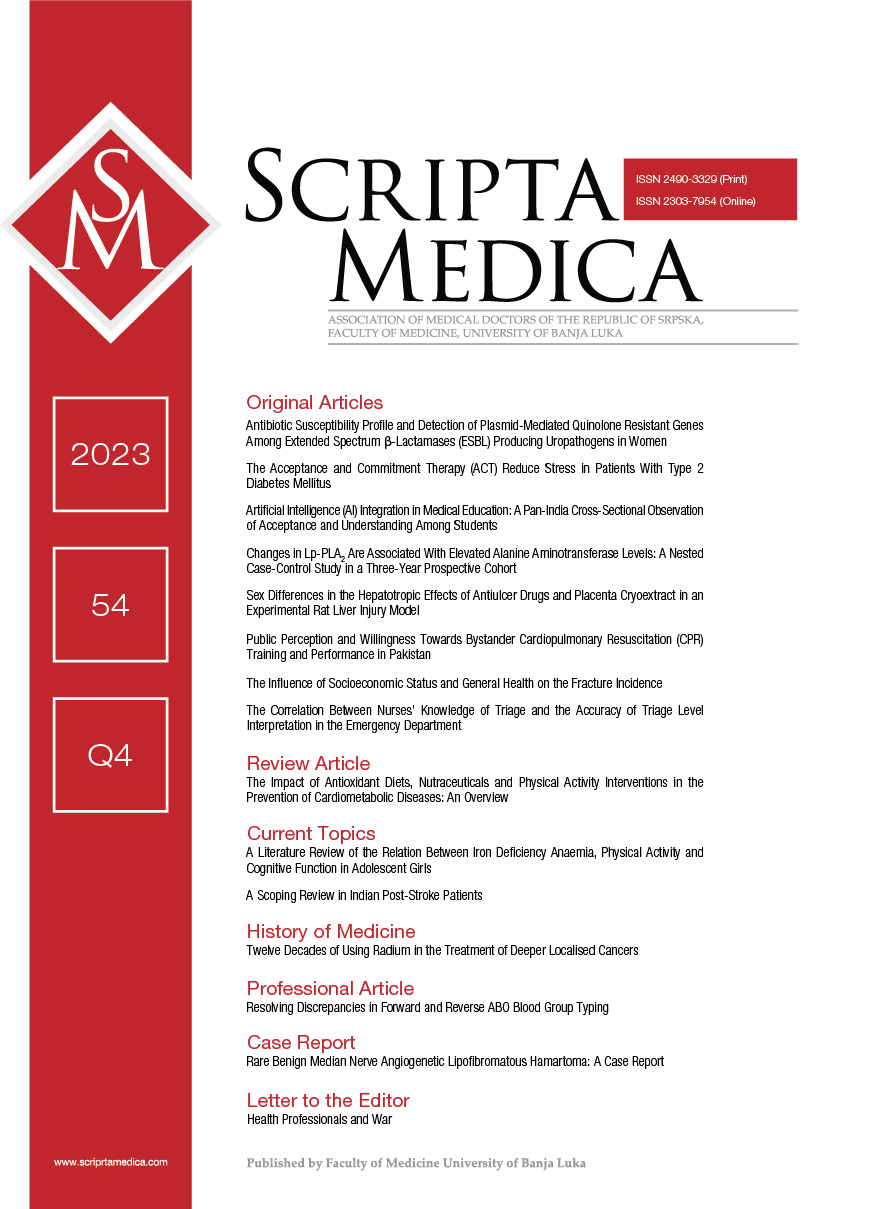Twelve Decades of Using Radium in the Treatment of Deeper Localised Cancers
Sažetak
The end of the 19th and the beginning of the 20th century marked a period of fundamental discoveries in the physics of ionising radiation (X radiation and radioactivity). Isolating radium, a highly radioactive element, immediately opened the way to its application for medical therapeutic purposes. It turned out that the sources of ionising radiation are very effective for changes localised on the skin and at small depths under the skin but not for lesions at greater depths. Interestingly, the inventor of the modern telephone, Alexander Graham Bell, was the first to come up with the idea of placing radium sources in glass tubes and placing them directly in the pathologically changed tissues of the patients to be treated (at greater depths). That period marked the beginning of a highly successful era in radium therapy, involving the use of capsules and needles filled with radium, which eventually led to the development of modern brachytherapy. Unfortunately, for several decades people believed in the universally therapeutic properties of radium, so that (fortunately in smaller quantities) it was added to water, food, hygiene products, etc.
Reference
Becquerel H. Sur les radiations mises par phosphorescence. Comptes rendus des sances de l'Acadmie des Sciences Paris 1896;122:420-1. French.
Sklodowska Curie M. Rayons emis par les composesde l uranium et du thorium. Comptes Rendus, Paris 1898;126:1101-3. French.
Schmidt G. Ueber die von den Thorverbindungen und einigen anderen Substanzen ausgehende Strahlung. Annalen der Physik und Chemie, Berlin 1898;301(5):141-51. German.
Curie P, Curie M. Sur une substance nouvelle radio-active, contenue dans la pechblende. Comptes Rendus, Paris 1989;127:175-8. French.
Curie P, Curie M, Bemont G. Sur une nomelle substance fortement radio-active, contenue dans la pechblende. Comptes Rendus, Paris 1989;127:1215-7. French.
Supek I. [History of physics]. Zagreb: Skolska knjiga, 1980. Croatian.
Curie M, Debierne A. Sur le polonium. Le radium, Paris 1910;7(2):38-40.
Kemikler G. History of brachytherapy. Turk J Oncol 2019;34(1):1–10.
Zimmermann R. Nuclear Medicine: Radioactivity for Diagnosis and Therapy. Orsay 2017.
Mazeron JJ, Gerbaulet A. The centenary of discovery of radium. Radiother Oncol 1998;49(3):205-16.
Osborne H. Biographical Memoir of Alexander Graham Bell 1847-1922. National Academy of Sciences of the united states of America 1943; Volume XXIII-first memoir.
Glicksman A. Radiobiologic basis of brachytherapy. Seminars in oncology. Nursing 1987;3(1):3-6.
Bell AG. Radium and Cancer (Letter to Dr. Z. T. Sowers). Science 1903:155-6.
Podgorsak E. Radiation physics for medical physicists. Berlin: Springer, 2010.
Dutreix J, Tubiana M, Pierquin B. The hazy dawn of brachytherapy. Radiother Oncol 1998;49(3):223-32.
Catalogue of Radium and accessory equipment for modern radium therapy. Toronto: X-ray and radium industries limited, 1940.
Reed AB. The history of radiation use in medicine. J Vasc Surg 2011;53(1):3S-5S.
- Authors retain copyright and grant the journal right of first publication with the work simultaneously licensed under a Creative Commons Attribution License that allows others to share the work with an acknowledgement of the work's authorship and initial publication in this journal.
- Authors are able to enter into separate, additional contractual arrangements for the non-exclusive distribution of the journal's published version of the work (e.g., post it to an institutional repository or publish it in a book), with an acknowledgement of its initial publication in this journal.
- Authors are permitted and encouraged to post their work online (e.g., in institutional repositories or on their website) prior to and during the submission process, as it can lead to productive exchanges, as well as earlier and greater citation of published work (See The Effect of Open Access).

